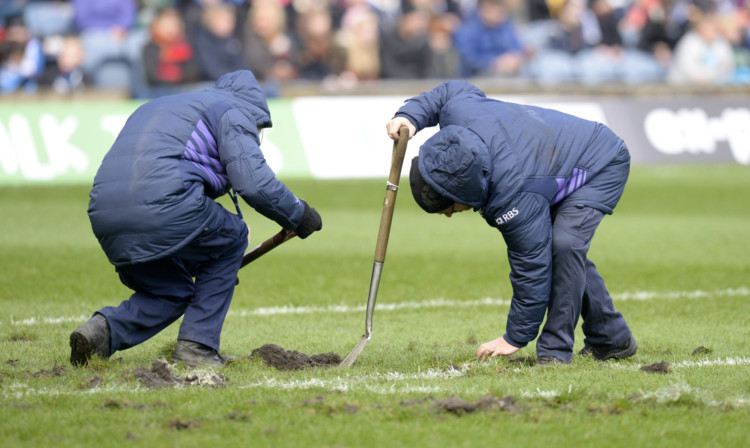Scottish Rugby has admitted defeat in its battle to preserve Murrayfield as a wholly natural grass pitch and will instead install a “hybrid” surface to the national stadium this spring.
In what the SRU describe as the “biggest single investment in Murrayfield since the stadium was reconstructed in 1994”, a Desso Grassmaster pitch, which combines natural grass with millions of artificial turf fibres, will be laid.
The move follows a fraught season for Murrayfield groundstaff in which a parasitic worm infestation has caused the playing surface to break up with regularity.
The condition of the pitch became so dire that last month Scottish Rugby announced that all fixtures intended for Murrayfield barring the two RBS 6 Nations games against England on Saturday and against France in a month’s time were being taken to alternative venues for the foreseeable future.
The problem has been exacerbated by Edinburgh having regular PRO12 and Heineken Cup games on the surface and the match being used for schools and youth games.
The SRU’s announcement on the change to a hybrid may have been an attempt to head off likely criticism of its condition when it appears on national TV at the Calcutta Cup match this weekend.
The new pitch is of the type used successfully for rugby at England’s Twickenham stadium, the Aviva Stadium in Dublin, in Cape Town and Port Elizabeth in South Africa and the indoor stadium at Dunedin in New Zealand built for the Rugby World Cup.
It’s also installed at renowed football stadiums like Wembley, both Old Trafford and the Etihad Stadium in Manchester, Liverpool’s Anfield and the San Siro in Milan.
Scottish Rugby’s director of management services Mark Laidlaw said the move was to produce “what is widely recognised as the best grass surface in the sporting world.”
“We all want to see the Murrayfield playing surface restored to the pristine condition for which it is renowned,” he continued.
The hybrid pitch produces the look and feel of natural grass but allows faster recovery and can be used intensively, for more than 40 fixtures a season.
Laidlaw added: “We are making this significant investment because we are concerned at the problems our pitch and others within the UK and beyond have experienced of late and feel that a reinforced surface is now required to meet the demands of
professional rugby.
“We have been affected by a parasitic infection this season and the challenges of keeping Murrayfield accessible in probably the most challenging rugby climate in the northern hemisphere.”
Murrayfield was always renowned for having one of the best playing surfaces in the world but the condition of the natural turf has deteriorated since the stadium was reconstructed in 1994 and a flood of the Water of Leith in April 2000.
Work on the project will begin later this spring with a view to the new surface being ready for the start of next season.
Edinburgh’s remaining four home fixtures in the Rabodirect PRO12 are likely to be moved to a new venue, with the Myreside ground of George Watson’s College, their original home field, the most likely temporary home.
